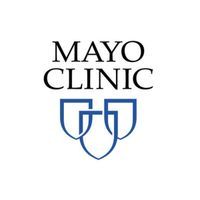
Eptinezumab Shows Positive Effects on Patient-Reported Outcomes in Medication-Overuse Headache from Chronic Migraine

After 12 weeks of treatment, almost twice as many patients on eptinezumab reported either “much improved” or “very much improved” than those on placebo, according to Patient Global Impression of Change.
Data from a subgroup analysis of adults with chronic migraine (CM) and medication-overuse headache (MOH) from the phase 3 PROMISE-2 study (NCT02974153) showed that treatment with eptinezumab (Vyepti; Lundbeck) is associated with clinically meaningful and rapid improvements in headache-related life impact. Findings also suggested that starting preventive treatment with eptinezumab can improve outcomes in this subgroup population without explicit instructions to wean or withdraw acute medication use.
The subgroup analysis, led by
Patients received up to 2 doses, each 12 weeks apart, for a 24-week treatment period. The overall mean age was 41.4 years, with the majority of patients being female (87.2%), White (9.35%), and with a mean of 16 acute medication days/month use at baseline. At baseline, 87.5% of patients reported having severe life impacts from their condition based on HIT-6 total score.
At the end of the analysis, those in the eptinezumab 100 and 300 mg groups saw mean HIT-6 total scores decrease to 57.5 (standard deviation [SD], 7.9) and 56.0 (SD, 8.6), respectively, following baseline scores of 65.1 (SD, 5.4) and 65.0 (SD, 4.9). Patients saw significant decreases in scores as early as 4 weeks into treatment and were sustained throughout the study duration. Despite a high proportion of patients with severe life impacts at baseline, by week 24, the proportion of patients declined substantially to 39.5%, 38.6%, and 65.5% in the eptinezumab 100 mg, 300 mg, and placebo groups, respectively.
"MOH management can be challenging for patients and providers," Starling et al wrote. "Based on this study, the first step should include preventive treatment that will reduce migraine frequency and, as other literature suggests, potentially include patient education of the negative effects of increased use of acute medications and the existence of MOH or ‘rebound headaches.’ If the reduction in the number of headache/migraine days is the main treatment goal in managing CM with MOH, a patient may not need to switch or limit their overused medication in order to achieve positive outcomes."
HIT-6 total score responder status, defined as a decrease of at least 6 points from baseline, was achieved by 52.7% and 62.9% of patients on eptinezumab 100 mg and 300 mg, respectively, compared with 36.6% of those on placebo. In terms of individual HIT-6 items, between 43.9% and 55.4% of eptinezumab-treated patients were responders on Items 1-3 compared with a 32.4% to 34.5% of patients on placebo. On items 4-6, the percentage of responders with improvement in at least 2 categories was between 25.2% and 40.1% of those on eptinezumab vs ranges of 11.0% to 21.4% on placebo.
READ MORE:
At week 12, 58.5% of patients receiving eptinezumab 100 mg and 67.4% of patients receiving eptinezumab 300 mg reported "much improvement," or "very much improvement" on the PGIC scale vs 35.8% of those on placebo. Those improvements were maintained at week 24. There was also significant improvements in PI-MBS through eptinezumab. Specifically, 57.1% of patients in the 100 mg group and 64.6% of those in the 300 mg indicated either "much improvement" or "very much improved" in PI-MBS relative to 29.9% of those on placebo.
At the end of the 24-week treatment period, physical and mental component scores, as well as individual domain scores, on SF-36, were significantly reduced with eptinezumab. The physical component domains, with included bodily pain, role-physical, physical functioning, and general health, decline by 2.6-6.2 and 4.0-7.1 in the eptinezumab 100- and 300-mg groups, respectively, compared with declines of 0.4-3.9 for those treated with placebo.
There were some limitations to the study, including the fact that opioid and barbiturate use was limited to only 4 days per month during the screening period, excluding those who have exceeded the limit. No limitations were imposed on any other acute medication after randomization. Additionally, a large placebo response was observed, which is common in migraine treatment studies; however, the placebo response was lower in patients with MOH relative to the overall PROMISE-2 population.
REFERENCE
1. Starling AJ, Cowan RP, Buse DC, et al. Eptinezumab improved patient-reported outcomes in patients with migraine and medication-overuse headache: subgroup analysis of the randomized PROMISE-2 trial. Headache. Published January 12, 2023. doi:10.1111/head.14434
Newsletter
Keep your finger on the pulse of neurology—subscribe to NeurologyLive for expert interviews, new data, and breakthrough treatment updates.




















